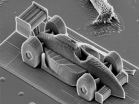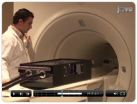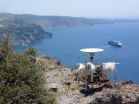(Press-News.org) Research from the University of Warwick suggests suicide rates are much higher in protestant areas than catholic areas.
Professor Sascha Becker from the University of Warwick's Centre for Competitive Advantage in the Global Society (CAGE) has published his latest paper Knocking on Heaven's Door? Protestantism and Suicide.
The study investigates whether religion is an influence in the decision to commit suicide, above and beyond other matters that may play a role, such as the weather, literacy, mental health or financial situation.
Professor Becker and his co-author, Ludger Woessmann from the University of Munich, used data from Prussia in the 19th Century and 21st Century data from the Organisation for Economic Co-operation and Development (OECD).
Professor Becker said: "We used the 19th Century data because at this time virtually everyone adhered to a religious denomination and religion pervaded virtually all aspects of life. In Prussia both Protestants and Catholics were non-minorities living together in one state and the two religions give a basis for comparison.
"The results were quite striking, in the 19th Century suicide rates among Protestants in Prussia were roughly three times as high as among Catholics."
The researchers then compared their findings to the OECD data and found there was still a difference.
Professor Becker said: "Even today, countries that are majority Protestant tend to have substantially higher suicide rates than those which are majority Catholic, suggesting that the relation of religion and suicide remains a vital topic."
Professor Becker believes the structures of the two religions explain the differences in the data. Protestantism is a more individualistic religion, whereas Catholicism has a stronger community structure.
He said: "When life hits hard, a Catholic can rely on a stronger community which might help him to cope. Secondly, Protestantism stresses the importance of God's grace alone and not by any merit of man's own work, whereas Catholicism allows for God's judgement to be affected by man's deeds and sins. As a consequence, committing suicide entails the prospect of foregoing paradise for Catholics but not for Protestants."
Another factor for Catholics is the confession of sins. Since suicide is the only sin that (by definition) can no longer be confessed, this creates an additional reason to deter Catholics from committing suicide.
Professor Becker added: "Suicide is affected by all these factors – the structure of the religious community, strongly held views about God's grace, and the impossibility of confessing the sin of suicide. As a result, we conclude that religion matters in life and death."
INFORMATION:
Notes to editors
Knocking on Heaven's Door? Protestantism and Suicide is available in the Warwick Economics Research Paper Series
http://www2.warwick.ac.uk/fac/soc/economics/research/workingpapers/2011/twerp_966.pdf
Professor Sascha Becker can be contacted on 02476 524247, alternatively please contact Kelly Parkes-Harrison, Press and Communications Manager, University of Warwick, k.e.parkes@warwick.ac.uk, 02476 150868, 07824 540863
Modern comparisons are based on the sample of ten OECD countries in which either Protestants or Catholics still make up more than 85 percent of the population in 2000; the average suicide rate among the four Protestant countries is 15.5 suicides per 100,000 inhabitants, whereas it is 8.9 among the six Catholic countries (suicide data from Organisation for Economic Co-operation and Development (2009); religion data from Barrett, Kurian, and Johnson (2001)). See also Huang (1996) and Helliwell (2007) for cross-country studies of religion and suicide.
END
Printing three dimensional objects with incredibly fine details is now possible using "two-photon lithography". With this technology, tiny structures on a nanometer scale can be fabricated. Researchers at the Vienna University of Technology (TU Vienna) have now made a major breakthrough in speeding up this printing technique: The high-precision-3D-printer at TU Vienna is orders of magnitude faster than similar devices (see video). This opens up completely new areas of application, such as in medicine.
Setting a New World Record
The 3D printer uses a liquid resin, which ...
One of the trickiest parts of treating brain conditions is the blood brain barrier, a blockade of cells that prevent both harmful toxins and helpful pharmaceuticals from getting to the body's control center. But, a technique published in JoVE, uses an MRI machine to guide the use of microbubbles and focused ultrasound to help drugs enter the brain, which may open new treatment avenues for devastating conditions like Alzheimer's and brain cancers.
"It's getting close to the point where this could be done safely in humans," said paper-author Meaghan O'Reilly, "there is ...
People often wonder if computers make children smarter. Scientists at the University of California, Berkeley, are asking the reverse question: Can children make computers smarter? And the answer appears to be 'yes.'
UC Berkeley researchers are tapping the cognitive smarts of babies, toddlers and preschoolers to program computers to think more like humans.
If replicated in machines, the computational models based on baby brainpower could give a major boost to artificial intelligence, which historically has had difficulty handling nuances and uncertainty, researchers ...
A major study led by the University of Adelaide has found that women who have had one prior cesarean can lower the risk of death and serious complications for their next baby - and themselves - by electing to have another cesarean.
The study, known as the Birth After Caesarean (BAC) study, is the first of its kind in the world. It involves more than 2300 women and their babies and 14 Australian maternity hospitals. The results are published this week in the international journal, PLoS Medicine.
The study shows that infants born to women who had a planned elective ...
TORONTO, Ont., March 13, 2012—Imagine that you have asthma, and rather than give you a set of instructions about what to do if you have an attack, your doctor invites you to help write them?
Would that make patients feel more engaged and empowered in managing their health care, and would that ultimately make them happier if not healthier?
These questions are being raised by Dr. Samir Gupta, a respirologist at St. Michael's Hospital.
His research has found that a wiki – a website developed collaboratively by a community of users, allowing any user to add and edit content ...
With the NCAA men's college basketball tournament set to begin, college basketball fans around the United States are in the throes of March Madness. Anyone who has seen a game knows that the fans are like extra players on the court, and this is especially true during critical free throws. Fans of the opposing team will wave anything they can, from giant inflatable noodles to big heads, to make it difficult for players to focus on the basket.
But one way a player might be able to improve his chances at making that free throw is by tricking himself into thinking the basket ...
Army scientists have demonstrated, for the first time, that antibody-based therapies can successfully protect monkeys from the deadly Ebola and Marburg viruses. In addition, the animals were fully protected even when treatment was administered two days post-infection, an accomplishment unmatched by any experimental therapy for these viruses to date. The work appears in this week's electronic edition of Proceedings of the National Academy of Sciences.
The filoviruses, Ebola and Marburg, cause hemorrhagic fever with human case fatality rates as high as 90 percent. They ...
STORRS, Conn. – The American public's growing skepticism in recent years about the existence of man-made global warming is rooted in apprehension about the troubled economy, a University of Connecticut study suggests.
Lyle Scruggs, associate professor of political science in UConn's College of Liberal Arts and Sciences, says the public's belief in climate change dropped significantly as the economy dipped and unemployment climbed in the late 2000s.
His research with UConn political science graduate student Salil Benegal found that popular alternative explanations -- ...
Evidence uncovered during research conducted in Florence's Palazzo Vecchio late last year appears to support the theory that a lost Leonardo da Vinci painting existed on the east wall of the Hall of the 500, behind Giorgio Vasari's mural "The Battle of Marciano." The data supporting the theoretical location of the da Vinci painting "The Battle of Anghiari" was obtained through the use of an endoscopic probe that was inserted through the wall on which the Vasari fresco was painted. The probe was fitted with a camera and allowed a team of researchers, led by scientist Maurizio ...
Do a Google image search for "Greece." Before you find pictures of the Parthenon or Acropolis, you'll see several beautiful photos of Santorini, the picturesque island in the Aegean Sea. The British Broadcasting Company named it the world's best island in 2011. Santorini is a tourist magnet, famous for its breathtaking, cliff side views and sunsets.
It's also a volcanic island that has been relatively calm since its last eruption in 1950. Until now. The Santorini caldera is awake again and rapidly deforming at levels never seen before. Georgia Tech Associate Professor ...


